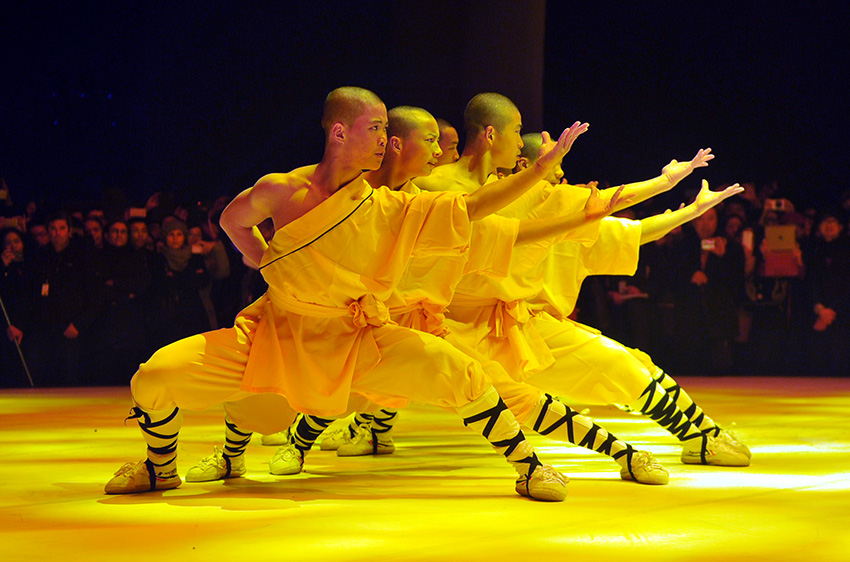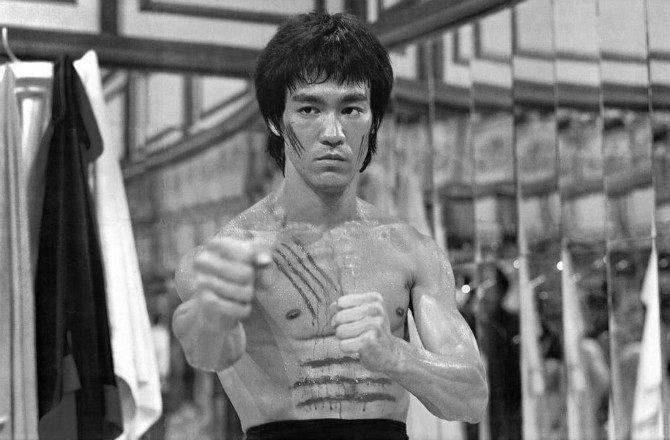24 Hours Hotline: +86 137-3541-1378
Email:[email protected]
24 Hours Hotline: +86 137-3541-1378
Email:[email protected]
A Brief Introduction of Chinese KungFu
Chinese Kung Fu, also known as Wushu or martial arts in China, is traditional Chinese sport and one of the most familiar examples of Chinese traditional culture. It is characterized by a variety of armed combat techniques. Chinese Kung Fu is very rich in form and content, including Taijiquan, Qigong (breathing exercise), Neigong (internal exercise), Tongzigong (children's exercise), Houquan (Monkey's Shadow boxing), Tanglangquan (Mantis' Shadow Boxing), and a humorous one Zuiquan—performed by a drunkard. Chinese Kung Fu can increase energy, fitness, coordination, mental well-being, self-discipline and confidence; it requires the concentrated coordination of the mind and body. There are two kinds of Chinese Kung Fu-?external" and "internal" Kung Fu. It is said that "In external Kung Fu, you exercise your tendons, bones, and skin; in internal kung fu, you train your spirit your qi (vitality), and your mind."

The History and the Development of Chinese Kung Fu
The history of Chinese Kung Fu can be traced to self-defense needs and hunting activities in ancient China. In the ancient times people lived by hunting for their food and fighting wild beasts. In Shang Dynasty (1600 ~1100 BC), hunting was regarded as an important measure of Kung Fu training, and this lead to Shoubó Kung Fu, one example of ancient Chinese Kung Fu, being developed. Later, in Zhou Dynasty (11th century BC~221 BC), Chinese Kung Fu developed as a kind of dancing—martial arts dancing.
In the Spring and Autumn Periods (770 BC-476 BC), great importance was attached to Chinese Kung Fu and it attracted the attention of many notable scholars and leaders across China. In the Qin Dynasty (221 BC to 206 BC) and Han Dynasties (206 B.C.–220 A.D.) martial arts dancing was very popular. During that period, innovation of Chinese Kung Fu was promoted; the 'Five-animal-style' exercise was an example of the radical innovation in Kung Fu seen in this period. In Tang Dynasty (581 – 618), Chinese Kung Fu developed rapidly, and it became a kind of test of scholarly merit, through which the best students were commended and celebrated. From then on, Chinese Kung Fu was introduced to many other countries, mainly to the throughout Southeast Asia. In Song Dynasty (960 ~1279) and Yuan Dynasties (1271 ~ 1368), the Development of Chinese Kung Fu reached the highest level. Then in the Ming Dynasty (1368~1644) and Qing Dynasty (1644~1911), Chinese Kung Fu also developed rapidly. During the two dynasties, schools specializing in training Chinese Kung Fu came into being and different genres of Chinese Kung Fu were integrated.
Till now, many teams and organizations of Chinese Kung Fu have been established and developed. Some of them have participated in the Olympic Games. Nowadays, Chinese Kung Fu is not only popular among Chinese, but also popular among lots of foreigners. More and more people are participating and practicing Chinese Kung Fu. Over its long history, Chinese Kung Fu has incorporated different philosophies and ideas into. It has expanded from self-defense to lifestyle exercise and as method of self cultivation. Chinese Kung Fu has had a large influence of popular culture both in the east and west and is now an integral element of Chinese traditional culture.
Styles of Chinese Martial Arts
There are hundreds of different styles of Chinese martial arts, each with their own sets of techniques and ideas. The concept of martial arts styles appeared from around the Ming dynasty (1368-1644). Before the Ming period, martial skills were differentiated only by their lineage. There are common themes among these styles which allow them to be grouped according to generalized "families", "sects" , "class" , or "schools" of martial art styles. There are styles that mimic movements from animals and others that gather inspiration from various Chinese philosophies or mythologies. Some styles put most of their focus into the belief of the harnessing of qi energy, while others concentrate solely on competition or exhibition.
The rich variety of styles has led to the creation of numerous classification schemes. Geographical location such as regional affiliation is one well-known example. A particular Chinese martial arts style can be referred to as either a northern fist or a southern fist depending on its point of origin. Additional details such as province or city can further identify the particular style. Other classification schemes include the concept of external and internal. This criterion concerns the training focus of a particular style. Religious affiliation of the group that found the style can also be used as a classification. The three great religions of Taoism, Buddhism and Confucianism have associated martial arts styles. There are also many other criteria used to group Chinese martial arts; for example, imitative-styles and legendary styles; historical styles and family styles. Another more recent approach is to describe a style according to their combat focus.
Geographical Classifications
The traditional dividing line between the northern and southern Chinese martial arts is the Yangtze River. A well-known adage concerning Chinese martial arts is the term "Southern fists and Northern kicks" (????). This saying emphasizes the difference between the two groups of Chinese martial arts. However, such differences are not absolute and there are many Northern styles that excel in hand techniques and conversely, there are many different type of kicks in some Southern styles. A style can also be more clearly classified according to regional landmarks, province, city and even to a specific village.
Northern styles
Manchu banner soldier, a caste of professional martial artists active in Chinese society as recently as a hundred years ago.
Northern styles (??) feature deeply extended postures—such as the horse, bow, drop, and dragon stances—connected by quick fluid transitions, able to quickly change the direction in which force is issued.
Southern styles
Southern Chinese martial arts (??) feature low stable stances and short powerful movements that combine both attack and defense. In practice, Nanquan focus more on the use of the arm and full body techniques than high kicks or acrobatic moves. There are various explanations for those characteristics. The influence of Southern styles can be found in Goju Ryu, a karate style from Okinawa
Famous Kung fu star
Bruce Lee
Bruce Jun Fan Lee (27 November 1940 – 20 July 1973) was a Chinese martial artist, philosopher, instructor, martial arts actor and the founder of the Jeet Kune Do combat form. He was widely regarded as the most influential martial artist of the twentieth century and a cultural icon. He was also the father of actor Brandon Lee and of actress Shannon Lee.

Lee was born in San Francisco, California, and raised in Hong Kong until his late teens. His Hong Kong and Hollywood-produced films elevated the traditional Hong Kong martial arts film to a new level of popularity and acclaim, and sparked the first major surge of interest in Chinese martial arts in the West. The direction and tone of his films changed and influenced martial arts and martial arts films in Hong Kong and the rest of the world as well.
Lee became an iconic figure particularly to the Chinese, as he portrayed Chinese national pride and Chinese nationalism in his movies. He primarily practiced Chinese martial arts (Kung fu), particularly Wing Chun.
Prev: Chinese Tea
Next: China Beijing Opera
Wechat: Chinaprivatetour
24 Hours Hotline:
+86 137-3541-1378
* Authentic Experiences: Genuine local experiences that immerse you in the true essence of Xi'an and beyond.
* Safety First: Highest safety standards with secure activities and reliable transportation.
* Customizable Tours: Flexible itineraries tailored to your interests and needs.
* Local Expertise: In-depth knowledge of Xi'an and China, offering exclusive insights.
* Professional Guides: Licensed bilingual guides with over 5 years of experience.
* Comfortable Travel: Experienced drivers and well-maintained vehicles for a smooth journey.
* Sustainable Tourism: Commitment to responsible tourism and supporting local communities.
* Customer-Focused: Personalized service and continuous improvement based on your feedback.
* Free Cancellation: Cancel up to 24 hours before travel for flexibility and peace of mind.
* 24/7 Support: Round-the-clock assistance for any questions or help needed.
(Your Privacy is Protected)
1 to 1 tailor-made service from our professional travel advisors for the most sophisticated
Constantly excellent reviews for attraction, hotel and service Competitive price
Local experts provide quality tours Best selected knowledgeable local guides Authentic local restaurants
7*24 hours available to create you a worry-free tour. No Hidden Fees and absolutely no pressure to buy. Secured









Copyright © 2017 www.xianprivatetour.com All rights reserved. 浙ICP备18056007号-6